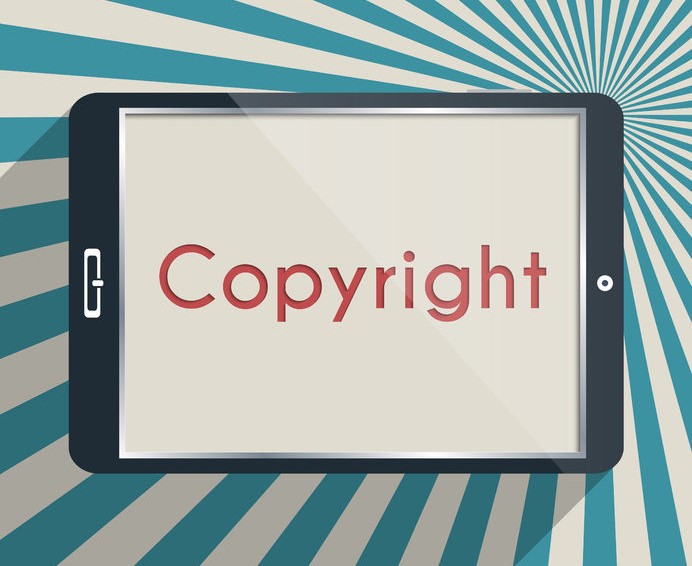
Ethikate’s Principal Lawyer and Trade Marks Attorney Kate Ritchie Explains Why Trade Mark Registration is Crucial for Small Businesses and Startups on 2UE Talking Lifestyle with David Koch.

No matter how organised and motivated you are, it is an inescapable fact that you are restricted by the number of workable hours in a day.
Spending two hours a day answering emails or one day a week preparing invoices for customers, may not be the best use of your time. So what’s the answer? Well, perhaps it’s time to consider outsourcing some of your workload to other people.
Thanks to the internet and the rise in popularity of cloud-based workrooms and storage systems that can be accessed from anywhere in the world, almost any task can now be outsourced. There are plenty of highly experienced freelancers registered online at outsourcing platforms such as UpWork, who are willing to work for reasonable rates and take some of the more time-consuming jobs associated with business administration off your hands.
However, as with everything, there are both pros and cons, which must be considered before deciding which elements of your business are suitable for outsourcing.
Before you start planning an outsourcing strategy for your business, you should think carefully about what positions you need to fill, and what kinds of jobs are typically outsourced.
It is worth considering that generally, you will have more control over full-time employees than contractors and freelancers because they are committed primarily to you and your business. With freelancers, you could end up competing for their time with other clients.
The biggest issue with taking on employees is that they become a fixed cost to your business and you may not be able to fully utilise them on a full-time basis, whereas when you outsource you can manage your expenses in real time and adjust terms in line with your needs in a way you can’t with permanent employees.
If you are considering outsourcing for your business, you will also need to make sure your insurance covers it. Check your professional liability insurance policy to ensure that as well as employees, independent contractors are covered for any claims arising from business-related activities they perform on your behalf.
Here are some of the outsourcing pros and cons:
Pros
Cons
About the Author: Kate Ritchie is a strategically focused Principal Lawyer and Trade Marks Attorney with both commercial and business services and legal experience. Kate has broad ranging competency in all aspects of legal services including intellectual property law, brand protection, commercial and business transactions, negotiation and alternative dispute resolution, internet law, privacy, competition and consumer law and sports law. Kate has worked with top-tier commercial law firms such as Clayton Utz and high profile companies such as Thiess Pty Ltd and Tatts Group. Kate founded Ethikate in 2014 with a passion for providing specialist advice and services in Intellectual Property Law, Trade Marks and Brand Protection Strategies, business and commercial law and entertainment and media law for startups, entrepreneurs and small to medium businesses.
Kate’s interview with Chloe James covered business success, the legal sector, “disruption for disruption’s sake”, startups and small businesses.
Check out the full interview below.

By Kate Ritchie, Ethikate Principal Lawyer and Trade Marks Attorney
Falsely believing that legal documents are ‘standard’ and lured by lower prices and the immediacy of information, founders are unknowingly investing in extraneous documentation that is putting their business at risk.
Though generic, downloadable documents may appear to be a convenient and economical alternative to traditional legal advice, they are potentially harmful to businesses. Generic legal documentation may not be tailored to address a company’s specific needs and leaves business owners unaware of their liabilities and therefore open to possible litigation.
As the legalese in these documents can be difficult to decipher, it is not uncommon for information to be misunderstood and irrelevant material mistakenly selected by business owners. Use of contracts that fall under the wrong jurisdiction is a common problem. For example, a Melbourne based business using contracts and agreements with terms governed by the state of California. This makes it apparent that the information has been obtained from an unreliable source and leaves the company completely unprotected. Another error often made is the publication and use of policies that the business may not legally require, such as a privacy policy. It’s risky, as the business is unknowingly accepting unnecessary responsibilities and may be making false statements.
Simple and avoidable mistakes made due to misunderstanding information can create a myriad of issues for businesses from both a legal and reputational standpoint. These oversights undermine a company’s credibility and will not go unnoticed by sophisticated clients, irreparably damaging the positive reputation business owners work tirelessly to build. Additionally, costly litigation that may arise due to false claims or copyright infringements is financially and emotionally catastrophic and can destroy a business.
There is no one-size-fits-all legal documentation; every business requires tailored contracts and policies. Savvy business owners need comprehensive advice and documentation to enable them to mitigate these risks from the outset and protect their two most valuable assets; their intellectual property and their brand.
Ethikate offers a range of affordable packages specifically designed for startup founders and small businesses, including our $199 Initial Consult package. If you have any questions about small business law, including Intellectual Property, Trade Marks and Brand Protection, feel free to get in touch. We’d love to hear from you!
About the Author: Kate Ritchie is a strategically focused Principal Lawyer and Trade Marks Attorney with both commercial and business services and legal experience. Kate has broad ranging competency in all aspects of legal services including intellectual property law, brand protection, commercial and business transactions, negotiation and alternative dispute resolution, internet law, privacy, competition and consumer law and sports law. Kate has worked with top-tier commercial law firms such as Clayton Utz and high profile companies such as Thiess Pty Ltd and Tatts Group. Kate founded Ethikate in 2014 with a passion for providing specialist advice and services in Intellectual Property Law, Trade Marks and Brand Protection Strategies, business and commercial law and entertainment and media law for startups, entrepreneurs and small to medium businesses.

It is undeniable that the internet and social media have become the dominant force that determines how we connect with other people, businesses and brands online. Social media is now a powerful, cost-effective medium that can be utilised to enhance your business reach and help you establish your brand in the global marketplace.
Over the next few weeks we’ll look at why your business needs a social media presence, how to get started with the basics, and how to optimise your social media strategy. As well as considering the opportunities social media holds for your business, we’ll also be looking at some of the risks it can pose and how you can best protect yourself against possible pitfalls.
Nowadays, when purchasing goods or services many people will check out a businesses’ social media page and/or blog. By creating a strong online presence that reflects your core values you can add a sense of authority to your brand.
Creating and implementing a consistent, targeted social media strategy can instantly provide your business with a sense of authenticity and credibility. Writing blog posts, sharing important news, or holding discussions via your social media profile can set you apart as a knowledgeable, helpful voice in your sector. This in turn will give customers the confidence to actively seek out your goods or services rather than turning to one of your competitors.
Social media is no longer restricted to certain groups and the majority of your customers probably use some form of it on a daily basis. By definition, platforms such as Facebook and Twitter allow you to be online and engaged instantly every single day of the year.
Capitalising on this cost-effective marketing tool can really boost your business and ensure that you are in direct contact with your customers. Social media allows you to post information, news and offers as they happen, helping you to create a strong connection with the people who matter to your business.
Interacting directly with people via a social media profile can also provide a much needed ‘human touch’ for your business, as well as creating a sense of familiarity and trust amongst current and potential customers.
As we’ve discussed previously, creating a strong brand is essential to the success of your business and what better way to consolidate your brand than through social media?
You can utilise the various platforms to relay your message as well as reinforcing your brand’s recognisability through the use of your logo, colour schemes and other visual aspects of your marketing materials. Social media is a great way of showing off your brand’s personality and establishing your business as a contemporary and accessible operation.
Social media is now an integral part of most people’s lives and as a business you should strive to optimise the way in which you use it to promote your brand. As we’ve discussed, your customers are now more accessible than they have ever been and the opportunities social media can give your business are extensive.
But, as with everything, there are risks involved with creating an online presence! Protecting your online intellectual property, as well as ensuring you are not infringing on anyone else’s rights or breaching any laws (such as Consumer, Defamation or Privacy laws) when publishing online content, is vital. It is also essential that your data and passwords are safeguarded from the threat of online attack or possible would-be infringers.
In Part 2 and 3, we’ll look at how to get started with social media, some of the practical issues you’ll need to deal with, how to minimise the risks we’ve mentioned, and how to ensure you are fully protected by the law.

Communicating your business messages and personal branding online is a fantastic, cost-effective way to reach out to and engage with, potential clients on a global scale.
However, the internet is rife with plagiarism and copyright infringement and protecting content can be a headache for business owners. Similarly, ensuring you do not infringe someone else’s material can also pose serious potential problems.
So, how do you ensure your material is original and that you own it? Alternatively, how do you stop would-be infringers stealing your ideas? Here are our 5 of our top tips to protect your online content.
Copyright notices are not mandatory, but they can act as a deterrent for would-be infringers by placing them on notice that your material and content is subject to copyright protection.
To use a copyright notice, all you need to do is insert the copyright symbol © followed by the year that the material was created and the name of the owner of the material. You can also include the words “All rights reserved”. For example, © 2014 Ethikate. All rights reserved.
It really is that easy! And those who are thinking about using your content may think twice if they see a copyright notice at the bottom of your material.
Content has a great habit of being shared and going ‘viral’ online. This is not such a bad thing as it can be a great opportunity to promote your business globally.
However, if it is not clear whose content it is, then it is kind of pointless right? Plus, no one likes a copycat, so it is important to ensure that your content is easily recognisable as being yours.
One way to do this is to ensure that all content is in a format that is not so easily editable (eg pdf, jpeg, unable to be selected and copied text) and has your brand applied to the document. You can do this by inserting your logo as an image or watermarking the content with your brand or web address. This has the benefit of not only protecting your work from being reproduced or wrongly attributed to someone else, but is also a great way to further promote your business.
Where you generate lots of content, including blogs and articles, it is really important to ensure you are not infringing someone else’s material. Even if you do so ‘innocently’, you can still be liable for copyright infringement.
There are many great online plagiarism programs you can use which allow you to upload content and have the program review your content against all available online content.
Using such programs is also really important if you outsource your content. A good plagiarism program will flag sections of your material that ‘matches’ online content, providing you with the online source and a percentage match. I use an online program called grammerly which seems to be accurate, reliable and has the benefit of being cost effective. However, it seems to work quite slowly when attempting to use larger documents for review.
It is important to note that copyright infringement is not determined by quantity or percentage, but by substance (or otherwise technically referred to as a “substantial part”). Hence it is important to consider whether the content is original and whether or not it constitutes a substantial part of the original works. This may be as a short as a single tagline or phrase, however if it is the most memorable part of the original material, then be wary as you may be at risk of copyright infringement. Acknowledgement of the copyright owner can assist you in certain circumstances but it is not the answer for business using content for their own commercial gain. If in doubt, seek legal advice or remove the potentially infringing content.
If you are planning to outsource your design work, or any other artistic or creative work, it is essential that you own, or at least have the ‘freedom to operate’, using the work. Without a contract to the contrary, your contractor will own the copyright in any work that they create for you.
For example, where you engage a graphic designer to develop a logo for you, if there is nothing in your terms of services to say that all copyright vests in you, then your graphic designer will own the copyright in your logo. This can have implications when it comes time for you to sell or licence your business or just a part of it, such as the brand. So, make sure your contractors hand over (in writing, verbal is not an effective transfer of ownership!) the copyright in your brand and any other work created exclusively for you.
If third parties, like contractors, already own the copyright in your brand or other material then it is worth considering whether an assignment (transfer of ownership) is worthwhile. This can be tricky and often designers are reluctant to relinquish their rights. However, in my view, any professional and ethical contractor that provides your business with exclusively created material (especially a logo for your brand) for valuable consideration, should be happy to assign the copyright to you.
The good news is that there are ways to have content removed from the internet when it infringes your copyright. For example, you can lodge a dispute with the relevant social media platform and report infringing content. However, you will need to be prepared to properly articulate your rights and demonstrate that you own the content, which can be tricky where it is not obvious that you own the content.
You can also issue the alleged infringer with a cease and desist notice. These can be effective where it is clear who is infringing your work and if they are based in Australia. However, issuing such a notice is not so straightforward when the infringer’s identity is unclear and they are based overseas as can often be the case.
It is also critical to be aware that sending someone a cease and desist notice without grounds can constitute an offence under the Copyright Act. Cease and desist notices should never be issued without having proper grounds to do so. Hence, you must clearly articulate in the notice why you believe they are infringing your copyright and take care with the language used in a notice. It is always best to seek professional legal advice before taking any action against an alleged infringer.
Copyright is a very technical area of law. There are serious liability issues for a business that infringes someone else’s copyright works or makes unjustified threats regarding copyright infringement, against someone else. Therefore, it is essential that you invest in getting the right legal advice from a lawyer that specialises in copyright.
Ethikate specialises in copyright law. If you believe someone has infringed your content or you would like to learn more about how you can how you can protect your copyright material, contact us for a no obligation, initial consultation.

So far in this five-part series, we have discussed the importance of creating a strong brand protection strategy in order to safeguard your assets here in Australia.
But what happens when you decide to expand your business and tackle the global marketplace? This post considers some of the steps you’ll need to take to ensure you are protected and operating legally in your overseas markets.
Unfortunately, ‘global trade mark registration’ or ‘international trade mark registration’ does not exist, so you will need to undertake significant research on the laws and conventions of your chosen country to establish how best to protect your brand there. This is no easy task and in any case, you will almost always need to engage a lawyer or attorney either in Australia and/or in each of the overseas markets to assist you with this process.
You will also need to ensure that you are able to operate legally without infringing on any existing rights held by similar businesses within your industry, in each relevant overseas market. Trade mark registration is recognised on a per country basis, with the exceptions of Europe and Africa where regional trade mark registrations are also available.
Clearance checks and legal processes will need to be implemented; many of which are not dissimilar to those here in Australia, but they do vary. So, keep reading!
There are two options for overseas trade mark registration which we set out below.
This is a process of international registration under a treaty recognised as the Madrid Protocol. Australia is a party to the agreement under the Madrid Protocol. Hence, where you have filed a trade mark application in Australia, registering international trade marks under the Madrid Protocol involves filing a single international trade mark application directly to the Australia Trade Marks Office (IP Australia), designating which countries or regions of the Madrid Protocol you wish to be registered for, accompanied by the designated fees.
This is generally the most straightforward option as it is both time and cost-effective where you intend to register in more than one overseas market. However, one potential disadvantage of using the Madrid Protocol for international registrations is that, if your application in Australia fails to register, so too does your international registrations. Hence, you should be confident that your Australian trade mark application has good prospects of achieving registration before registering overseas using the Madrid Protocol.
It is also important to remember that any of the countries included in your Madrid Protocol application can choose to reject your registration request. If this happens, you will need to engage a qualified trade marks agent in that country to prosecute the trade mark application on your behalf. This can sometimes result in more cost to you than had you filed the application directly with those agents in the first place!
If you want to focus your international expansion on one or two overseas markets, you may decide to tailor your overseas protection strategy on a country-by-country basis. This can sometimes be tricky, as local laws and conventions can vary greatly. You will also need to engage a domestic lawyer or attorney in each of those countries who is qualified to file and prosecute the trade mark applications on your behalf. This option can become very expensive and time consuming if you wish to register in more than one or two overseas markets.
With regards to European protection, you can apply for a ‘Community Trademark’, which enables you to lodge a singular application for protection in all 27 EU member states. However, Community Trademarks by their nature are prone to opposition as conducting clearance searches in 27 countries is not generally feasible and so your risk of conflicting with similar marks in one or more of the EU member states can be quite significant.
Whichever option you use, it is also important to keep in mind that international conventions and each country have strict time limits and ‘priority dates’, and not all are the same.
Many countries and regions including China, Japan, German, Spain and Korea, operate on a ‘first to file’ basis. This means that the first person to file and successfully register a trade mark in those countries will be deemed the owner of that trade mark. This can create issues where you may have been using your trade mark in one of these countries, but didn’t register it straightaway. If someone else registers your trade mark in these countries first, it will be very difficult to claim your right of ownership. The owners of well-known brands such as Penfolds, Apple, Ferarri, Pfizer as well as celebrities including Justin Beiber and Michael Jordan are just some who have fallen victim to China’s trade mark ‘squatters’ as a result of China’s ‘first to file’ principle. Unless you have lots of time and money to start a brand war in China you will find it almost impossible to reclaim ownership of your brand in these countries. This is very different to Australia (and other countries such as the US and Canada) where prior use is recognised as a prior right of ownership of a brand, regardless of who files the trade mark application first.
Many countries allow you to extend your existing Australian registration and accept it as protected in that country after completing certain formalities. This is a result of these countries signing up to treaties and conventions such as the Paris Convention. Where you apply for protection in a contracting country of the Convention and then apply for protection in other contracting countries, within six months of the date you filed your original application, you can claim ‘priority’ so that protection for your trade marks in each contracting country will backdate to the original filing date of that first application.
Hence, if you file a trade mark application in Australia, you will have six months to file trade mark applications in other contracting countries such as the US, Canada or the UK and protection for these overseas trade marks will backdate to the date you first filed your trade mark application in Australia. For more information check out The World Intellectual Property Office (WIPO) website for the list of the 176 contracting countries to the Convention.
The Paris Convention doesn’t prevent you from filing a trade mark application overseas at a later date. However if you don’t file within the six month timeframe, your overseas trade mark applications will lose priority under the Convention. Hence, protection will only apply on and from the date you filed or registered the overseas application, depending on the local laws of that particular country. So it is important to consider your international brand protection strategy around the same time you file your Australian trade mark application.
In a word, yes! With the online world creating a global market for businesses of all shapes and sizes, international protection of your brand is more important than ever. So, if you are intending to promote and sell your goods or services in overseas markets (eg via your ecommerce website) then you need to ensure that you can do so freely and have the necessary protection in place, just as you do in Australia.
Choosing not to register and protect your interests outside of Australia allows the possibility for others to make use of your brand overseas and potentially harm your reputation and/or opportunities for international expansion.
Here are some factors to consider when deciding whether or not to protect your brand overseas:
Tackling overseas protection quite complex and therefore daunting for business owners, despite international treaties and conventions such as the Madrid Protocol. At Ethikate we are experienced and knowledgeable on overseas trade mark registrations and can offer specialist advice on how you can create a strong international brand protection strategy.
We will provide cost-effective, tailored solutions specific to your businesses’ expansion plans and can manage your international trade mark applications for you, right through to registration.
Contact us to speak to an experienced intellectual property lawyer and trade marks attorney about your international brand protection strategy today.

On the 5th August 2014, the federal government announced its plan to implement new laws by the end of the year that will require telco’s to capture and store information about your online activities via your metadata.
The amendments to the existing telecommunication interception laws is justified by the government’s perceived need ‘to combat home-grown terrorism and Australians who participate in terrorist activities overseas’.
So what is metadata? Essentially “metadata” (or “communications data”) is defined in two ways:
In other words, it includes sender and receiver information and the type of media used to make a communication (eg phone call, text messages, email) but excludes contents or the substance of a communication. However, the definition of metadata is still ambiguous and whilst URL’s are arguably intended to be excluded from the definition, evidence suggests that some telco’s are in fact providing URL use data to the extent that they deem the information to exclude the ‘content’ of the website.
Whilst the government being able to obtain metadata is not new, what is new is that there will now be a mandatory period of 2 years during which telco’s will be required to retain metadata. This new right of government agencies to be able to conduct mass surveillance, regardless of whether or not they suspect wrongdoing by a particular individual seems wrong to me. Even if the ambiguity as to what constitutes “metadata” is resolved, arguably metadata can be more telling about you than the content of communications themselves. A study by Stanford University students demonstrated that metadata can reveal vast information about an individual “including medical conditions, financial and legal connections, and even whether they own a gun”.
How do you feel about the government’s right to be able to conduct mass surveillance? Does the threat of terrorism justify it?

Ethikate is a boutique Australian law firm and trade marks attorney practice helping SMEs protect their brand and intellectual property. { More }
"Kate’s business name says it all. I love working with Kate, she is supportive, reliable, honest and gets things done quickly and correctly. Everything you need in an Attorney. I highly recommend a conversation with her at the very least to see if you can work together."
Jodie Coall, People & Business Helper, Melbourne Natural Wellness